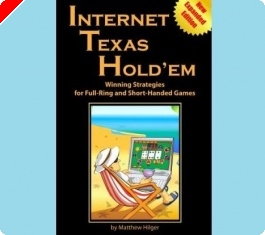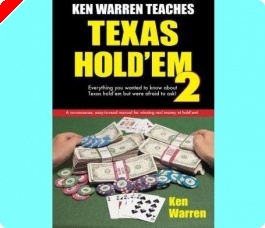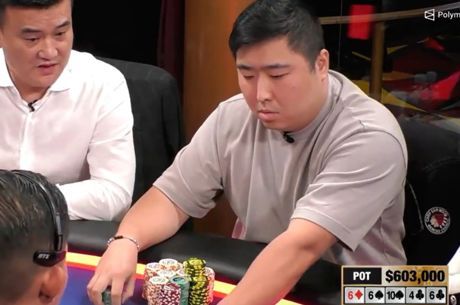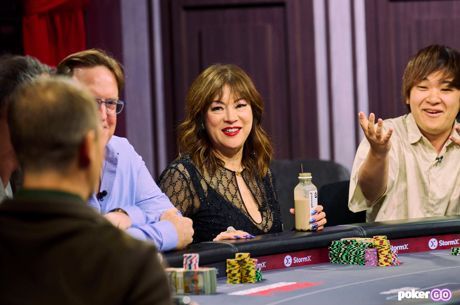Poker Book Review: Phil Shaw's 'Secrets of Sit'n'gos'
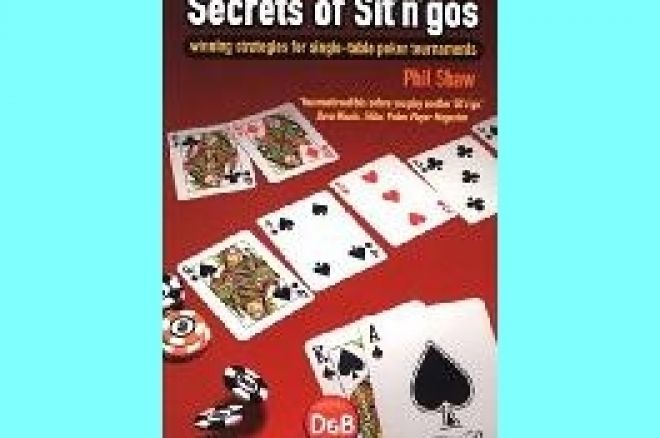
London-based online poker player and instructor Phil Shaw has made a name for himself over the last several years as a formidable online competitor, appearing on several sites under variations of his "Jackal" moniker to dominate limit and no-limit cash games, multi-table tournaments, and sit-'n'-gos. It is the latter category which Shaw focuses upon in his first strategy book, Secrets of Sit'n'gos, a no-nonsense primer for that increasingly popular, one-table, play-when-all-seats-are-filled variety of poker tournament. Shaw's book efficiently outlines strategies for all stages of the sit-'n'-go format, from pregame concerns such as selecting games and analyzing structures all of the way to decision-making when heads up.
The book is especially well written and organized, perhaps not a surprise given Shaw's degree in English Language and Literature. Less expected given such a background is the economical, even "lean" style employed by Shaw, whose text is entirely free of extraneous asides or anecdotes. The first part of the book consists of ten chapters (about 130 pages) covering the various stages of standard, one-table, nine- or ten-player sit-'n'-gos plus additional treatment of non-standard sit-'n'-gos and other topics.
This is followed by a lengthy (90-page) final chapter offering single-page hand quizzes that apply concepts from throughout the book. The quizzes are organized in sections corresponding to the various stages of sit-'n'-gos covered in early chapters, and while they might have been placed at the end of each chapter, the method of presentation encourages readers to read through the entire text first, then revisit chapters when moving through the quizzes �� perhaps a more effective instructional method.
Shaw's approach throughout emphasizes mathematically-derived solutions, though his clear, communicative style makes the occasionally technical discussions involving concepts like EV (Expected Value), ICM (the Independent Chip Model), ROI (Return on Investment), and the like easy to follow. Even though nearly all of the concepts and advice should apply to live sit-'n'-gos, the focus throughout is on online games. Thus do the initial chapters covering pregame issues and considerations focus on the kinds of structures one typically encounters on the most popular online sites, as well as the different implications of "turbo" and regular speed formats one normally encounters at these sites.
From the beginning, Shaw advocates that the serious sit-'n'-go player become familiar with helper software and sites (e.g., those that aid in the assessment of opponents, provide ICM calculations on the fly, etc.), although with the disclaimer that one consult the terms and conditions of the site before utilizing such resources so as to ensure the site does not ban their use. Along these lines, Shaw provides a list of "tools and resources" near the text's conclusion.
Shaw's treatment of the early game covers several important areas of concern, including how to analyze and measure one's own abilities against one's opponents' as well as figuring out quickly what "type of game" one is in (e.g., tight-aggressive, tight-passive, loose-aggressive, loose-passive). The main thrust of Shaw's advice for early rounds is to exercise caution and not seek risks recklessly. As he does throughout the book, Shaw here supports particular recommendations �� say, not to be too anxious to move all in early �� with ICM calculations demonstrating the mathematical soundness of such advice. The chapter also includes sections covering pre-flop hand selection and post-flop scenarios (e.g., what to do when flopping monsters, draws, marginal hands), although one sees already in this discussion of the early game how often it is the case that factors like relative chip stacks and the number of players remaining profoundly affect how one assesses the value of one's holdings.
The importance of stack sizes becomes even more pronounced, argues Shaw, as one moves into the middle game. Since even non-"turbo" sit-'n'-gos often involve fast structures, one must again be careful about weighing the risks of certain moves that might seem less problematic in slower, multi-table tournaments. For example, Shaw points out how blind stealing and defending the blinds can prove detrimental in the middle game, since even one failed move could result a significant hit to one's stack as play nears the bubble. Shaw also specifically addresses reraising and dealing with reraises during the middle stages of play, with ICM considerations again guiding one's decisions.
Chapters on late-game and bubble play show how the rising blinds most often force players into "all in or fold" decisions. Thus much of the discussion here involves comparing hand ranges as one weighs whether to push all in or to call another player's all-in. Of particular interest here are discussions of certain theories the less experienced sit-'n'-go player likely has not considered, such as the fact that a player with a dominating stack actually prefers the bubble to last longer so as to have more hands during which to exploit his or her advantage. There are also useful comments here regarding the phenomena of implicit "collusion" on the bubble and other manipulating maneuvers that sometimes can work against inattentive or less savvy players.
As Shaw mostly concentrates on the standard sit-'n'-go that pays the top three spots according to a 50%-30%-20% schedule, he explains how important it is for players who have made it to three-handed to focus on going for the win given the marked difference in payouts. When it comes to heads-up play, Shaw presents two primary strategies �� small ball and "jam or fold" �C and how factors like your opponent's relative skill level to yours should influence your approach. With regard to the "jam or fold" strategy, Shaw espouses the game theory-based advice of Bill Chen and Jerrod Ankenman from The Mathematics of Poker (2006), though adds some additional considerations as well.
The remaining chapters cover various non-standard sit-'n'-go formats (e.g., six-max, two-table, satellites), the limitations of ICM, the aforementioned list of sit-'n'-go tools and resources, and bankroll concerns. With regard to the latter, Shaw provides an outline for advancing from lower to higher stakes, demonstrating how to use one's ROI to gauge when it is most feasible to consider an upward move. Finally, the hand quizzes rounding out the book are in multiple-choice format. Such a format �� which yields only one "correct" answer for each question �� will likely invite some readers to take issue with some of Shaw's answers; in any case, the quizzes do provide concrete illustrations that helpfully reinforce the concepts previously discussed.
For experienced sit-'n'-go players, some of Shaw's discussion may prove a review of already understood concepts, though newer players will surely benefit greatly from the clear, precise presentation of those concepts here. Those who have played and enjoy sit-'n'-gos but have yet to delve deeply into the world of ICM may find Secrets of Sit'n'gos an inviting introduction as well. Indeed, one imagines that the book's relative brevity (and welcome lack of superfluous material) should particularly appeal to the sit-'n'-go enthusiast who isn't necessarily interested in waiting too long before hopping into another game.
Editor's Note: Martin Harris' reviews of current poker books appear every other Tuesday, alternating with his ongoing "Poker and Pop Culture" series. Visit our news archives by selecting the white-on-blue "Poker News" tab from our home page.


